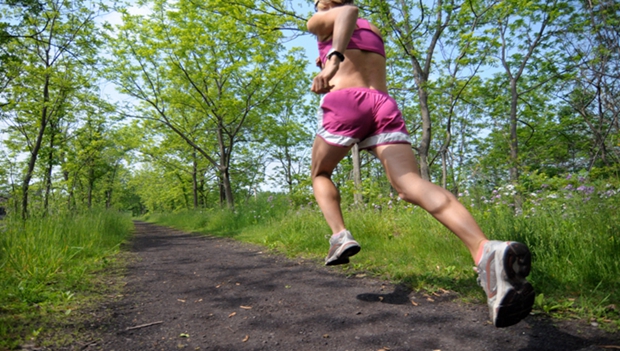
The terms "threshold run" and "tempo run" may be familiar to many runners, but telling the difference between the two might be a challenge. Many runners have also heard of the term "lactate" or perhaps, more commonly, "lactic acid." In this article, we'll use the term lactate to describe the by-product of anaerobic metabolism that is common during intense workouts and races.
Threshold Running Basics
The concept of threshold running is pretty simple. It's simply running at a pace where lactate does not accumulate significantly in the blood during the workout, but rather stays at a constant level.
One way to see how much lactate your body produces is to get tested in an exercise physiology lab. You will be asked to run faster and faster paces while blood is drawn throughout the workout to establish your "lactate curve." On this curve there will be an inflection point at which the amount of lactate dramatically rises.
Just prior to that dramatic rise is a speed that is your lactate threshold; run past it and you'll use a great deal of anearobic metabolism to fuel your running. That's fine when you're racing the final mile of a 5K, but when you're trying to complete a threshold run, it's inappropriate to run that fast.
What is really cool about threshold running is that your breathing, especially the rhythm of your breathing, changes at threshold pace (the book, Better Training for Distance Runners by Martin and Coe features a graph showing ventilation and lactate accumulation with various running speeds). This is fantastic news because it means that you can "feel" your threshold. It's a pace that is faster/harder than your normal easy run, but is slower than your 5K or 10K race pace. While the pace is challenging, it's not so hard that you can't run that pace for 20 or 30 minutes if you're fit.
More: How to Improve Your Lactate Threshold
How to Find Your Threshold Pace
There are various ways to calculate your threshold pace, yet my suggestion is to take each threshold workout individually and simply say, "This should be harder than my easy day pace, but once I feel my breathing going into that rhythm I feel when racing a 5K, then I need to back off the pace."
Threshold runs are a great way to gain aerobic fitness, and they are a cornerstone workout for all distances, from 5K to the marathon.
More: Target Pace Training
Tempo Runs
So what about tempo running? Tempo workouts are runs that are longer than threshold runs. You can get into a good rhythm and maintain it for several miles.
A marathoner might warm up for 2 miles, run 8 miles of tempo, and finish with 2 miles easy. It's a great way to get in 12 miles (and can be done on a 6-mile out-and-back course), of which 8 miles will be solid aerobic running.
The reason I don't use the terms tempo and threshold interchangeably is that threshold should describe running that is just slower than lactate threshold, whereas tempo describes running where you get into a groove that you can hold for a longer distance.
More: Tempo Running Tips to Boost Speed
Rather than assign an athlete a tempo run, I usually assign a run at either half-marathon pace or marathon pace. But, this is another article.
More: Half Marathon and Marathon Pace Workouts
 Use a pace calculator to determine your pace and sign up for your next race.
Use a pace calculator to determine your pace and sign up for your next race. About the Author

Get ACTIVE on the Go


Couch to 5K®
The best way to get new runners off the couch and across the finish line of their first 5K.
Available for iOS | Android






Discuss This Article